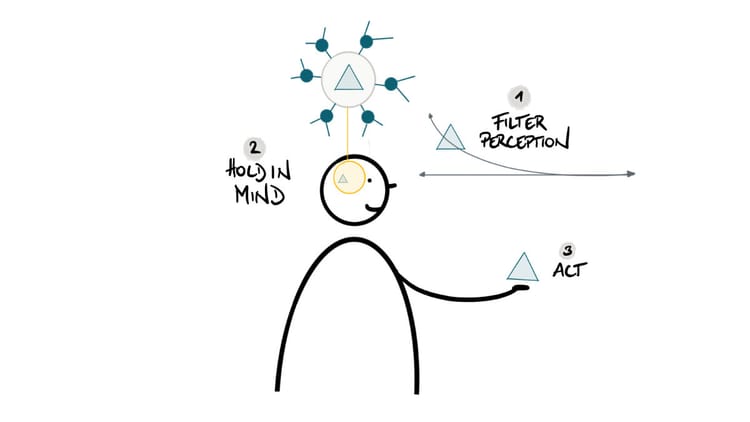3. The Knowledge Architect: 6 Principles for Building Courses That Actually Work

In Part 1, we dismantled the myth of genius and discovered that expertise is built on a foundation of thousands of mental models, or schemata. In Part 2, we explored the cognitive science of how those schemata are forged—through the active, effortful work of our limited Working Memory building a vast library in our Long-Term Memory.
Now, we arrive at the most practical question: How do we, as teachers and course creators, apply this science to build learning experiences that deliver real results?
This is where you stop being just a presenter of information and become a Knowledge Architect.
The Unspoken Agreement of Every Course
First, let's establish our North Star. What makes a course truly great? It’s not about flashy gimmicks, "fun" activities, or the amount of content you provide. The quality of any educational product comes down to a single, simple question: Are people learning what they came here to learn?.
Every time a student enrolls in your course, they enter into an unspoken agreement with you: “I am giving you my money, my time, and my attention. In return, I trust that you will guide me to the outcome you promised, and that the journey will be a good use of my time”.
Your job as a Knowledge Architect is to honor that agreement. Your job is their learning. This means you must architect a learning journey where students, with an acceptable amount of struggle, reach the outcome they desire.
The Architect's Toolkit: 6 Science-Based Principles
To build this journey, we don't need to guess what works. We can rely on core principles derived directly from the cognitive science we explored in Part 2. The goal of each principle is the same: to help students use their limited Working Memory to build powerful, lasting knowledge in their Long-Term Memory.
Here are six principles for your toolkit.
1. Manage Cognitive Load
A beginner’s Working Memory is incredibly easy to overwhelm. If you present too much new information at once, or ask them to perform a task that has too many new steps, their workbench gets overloaded. When this happens, learning stops. Your primary job is to be a ruthless manager of cognitive load. This means breaking down complex topics into small, digestible pieces and using scaffolding to support them as they learn.
2. Manage Attention
Learning only happens when students are thinking about the right things. As the architect, you must direct the spotlight of their attention. Before you introduce a new concept, prepare them. Tell them the big picture, explain why it's important, and clarify what they should focus on. Eliminate any distracting or irrelevant information from your slides, videos, and explanations.
3. Present Using Dual Coding
Working Memory has two main channels for processing information: a visual channel and an auditory channel. The principle of Dual Coding states that we learn best when we engage both channels simultaneously. The most effective way to do this is to pair simple visuals with spoken words. Avoid slides with long blocks of text that you simply read aloud. Instead, show a simple diagram, image, or a few keywords, and use your voice to explain the concept.
4. Schedule Generative Learning Activities
Students do not learn by passively absorbing information. They learn when they actively retrieve information from memory and connect it to what they already know. This is called Generative Learning. You must design activities where students have to work it out for themselves. This could be summarizing a concept in their own words, solving a problem without looking at the solution, or teaching the idea to someone else. Stop just talking; give them activities where they have to think.
5. Use Worked Examples
Asking a beginner to solve a complex problem from scratch is a recipe for cognitive overload. They have to hold the goal, the steps, and the new concepts in their limited Working Memory all at once. A far better approach is to use Worked Examples. First, show them a step-by-step example of how to solve the problem while you explain the process. Only after they have studied the completed example should you ask them to try it themselves.
6. Practice Spaced Retrieval
Building durable, long-term knowledge requires revisiting information over time. The science is clear: practicing something for one long session is far less effective than practicing it in multiple, shorter sessions spaced out over time. This is called Spaced Retrieval. Design your course to include quizzes, homework, and activities that require students to recall key information from previous lessons. This effortful recall is what strengthens the pathways in their Long-Term Memory.
The Architect's Promise
Being a Knowledge Architect is about making a fundamental shift in your approach. It’s a move away from seeing teaching as a performance and toward seeing it as the deliberate, thoughtful design of a transformative experience.